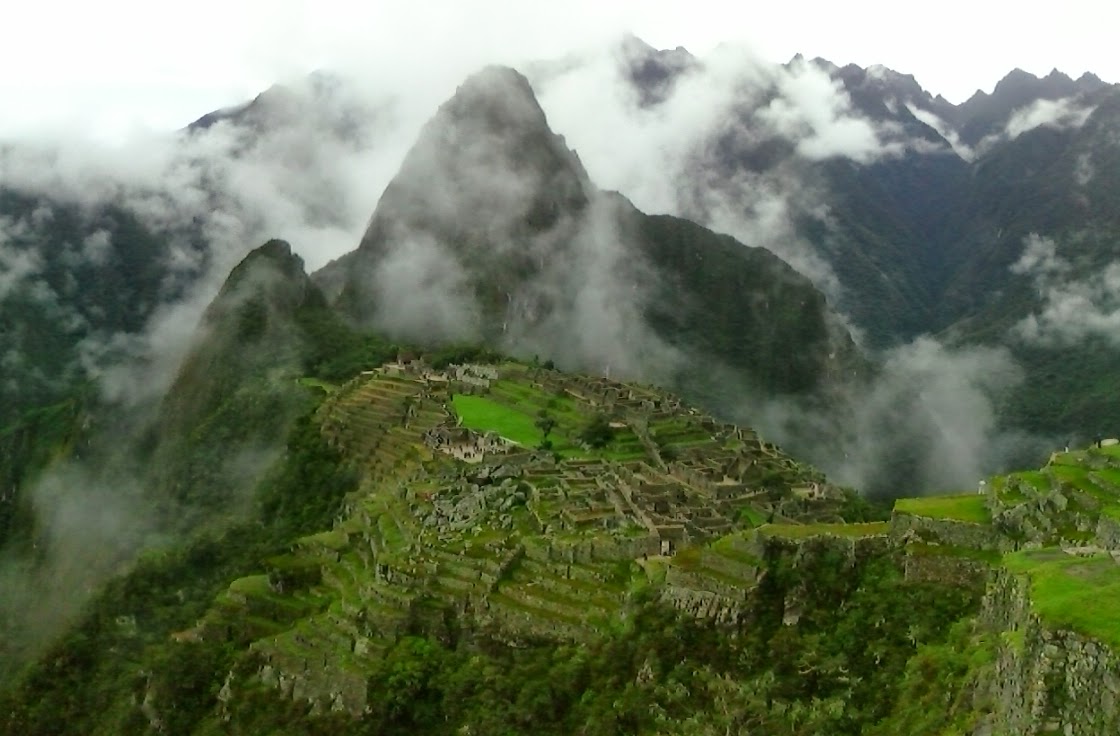 |
| Riding through the Sacred Valley |
The time had come to bring this journey to an end. If I had continued on to Bolivia, I would likely have not stopped for another two months. I could not think of a more appropriate way to end this journey than with a ride through the Sacred Valley.
I started out from Cusco. I rode by the ruins of Q'enqo. I stopped for a few minutes, but it did not look like there was that much to Q'enqo besides some kind of ceremonial circle. Qénqo looked more like a quarry to me than anything else. I did not look real well though.
 |
| Qénqo |
Pisac
I then rode on to Pisac. Based upon the timing, I decide to stay the night in Pisac. This turned out to be a good idea. I did not know how large the ruins of Pisac were. The owner of the hotel where I stayed said it was about 5 km from the beginning of the ruins near the city to the other side. It has quite a bit of elevation change as well. The hike took me about 3 hours.
Pisac seems like a functional city. It was described by one person as the city, whereas Machu Picchu is the summer home. It was extremely well set up for defense as it sat high on a mountain with limited entry routes . The majority of the site was terraces for agricultural production. There were dwellings for military as well as farmers. Finally, there were a set of buildings that were likely a temple area.
 |
| One of the entry points to Pisac; very easy to defend |
 |
| The temple area at Pisac |
 |
| One of the residential areas at Pisac |
 |
| Looking up at one of the ruin sections at Pisac |
Ride to Urubamba and on to Maras and Moray
The next morning I left at a good time. I rode through the Sacred Valley and arrived at Urubamba fairly early (before 11 am). I had planned to stop at Urubamba; but since it was so early, I decided to continue on. Leaving Urubamba it is a stiff climb all the way to Maras. Maras is the exit for Moray another archeological site and the salineras (pools used for salt production). One theory about Moray is that it was used by the Incas for agricultural experimentation. Given the bowl shape, each terrace level has a different temperature.
Rumor has it that the salineras have been used to produce salt since the Inca times. A spring of salt water flows out of the side of a mountain. The water is guided into pools. The pools then evaporate leaving the salt. The salineras do not produce salt during the rainy season as the pools never completely evaporate
 |
| Salineras evaporation pools |
 |
| Salt water from the mountain. I tasted it; very salty. |
My Legs Give Out
I continued from Maras towards Chinchero. Given the ride from the previous day, hiking Pisac, the current day's ride, the climb from Urubamba to Maras and the fact that I had not eaten lunch; my legs started getting real weak as I was approaching Chinchero. Then to top it off, the skies opened up with a tremendous, chilly thunderstorm. I was struggling.
I kept going. At one point while stopped, a tourist bus pulled over and asked if I needed help. I was tired, weak, cold and hungy. They were going to Cusco. The thought of a warm shower brought joy to my being. I gladly took that ride and so ended the last ride on my bicycle for this journey.






















































